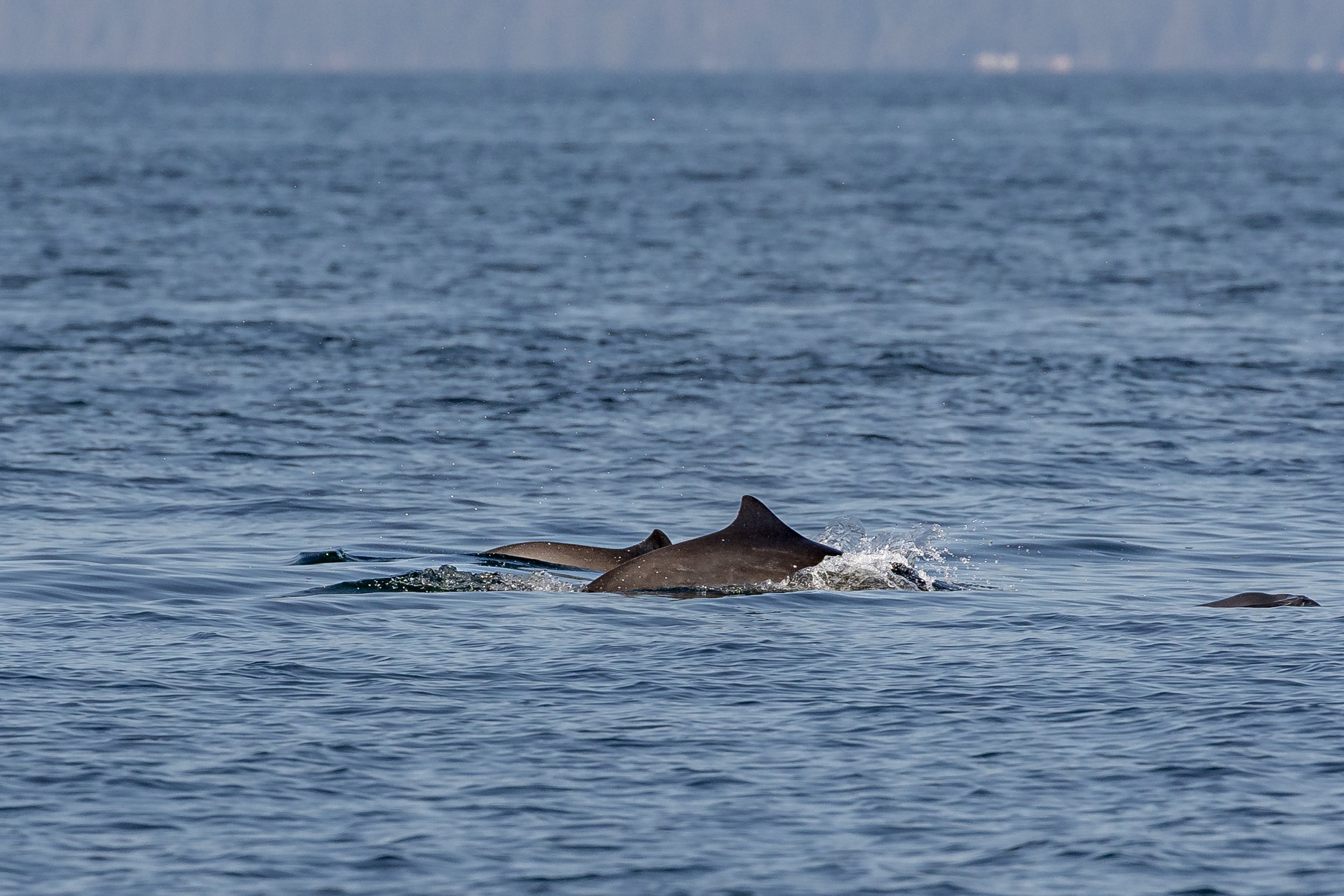September 15, 2023, 3:30 - Humpbacks humpbacks everywhere!
The Salish Sea, a body of water shared between the United States and Canada, is home to an abundance of marine life. For decades, it has been an essential habitat for various species of whales, including the majestic humpback whale. But as with many marine ecosystems around the world, the Salish Sea has faced its share of challenges, leading to a concerning decline in humpback whale populations in the past. I
The Salish Sea has a long history of hosting a diverse array of marine life, from salmon and sea lions to the iconic orcas and humpback whales. Humpback whales, with their distinctively long pectoral fins and haunting songs, are known for their impressive migratory journeys. In the past, the Salish Sea served as an important feeding ground for these whales, offering them a rich diet of krill and small fish during the summer months. However, the population in the region faced a drastic decline during the 20th century due to various human activities.
Several factors contributed to the declining humpback whale population in the Salish Sea:
Whaling: Whaling activities, which were once a thriving industry in the region, led to a significant decline in humpback whale populations. They were hunted for their blubber, meat, and other valuable resources.
Ship Strikes: Collisions between humpback whales and large vessels posed a significant threat to their survival.
Habitat Degradation: Human activities, including pollution, industrialization, and increased maritime traffic, led to habitat degradation, affecting the availability of food and the overall health of the ecosystem.
In the face of these challenges, a dedicated effort has been made to protect and conserve humpback whales in the Salish Sea. Conservation measures and advocacy have played a pivotal role in the remarkable recovery of these majestic creatures:
International Whaling Ban: The international moratorium on commercial whaling, established in 1986, played a critical role in allowing humpback whale populations to slowly recover.
Protected Areas: The creation of marine protected areas and slow-down zones in conservation efforts as part of the expansion of protection for the Southern Resident Killer Whales critically endangered population also may be helping the humpback whale population by creating safe spaces for them.
Collaborative Research: Scientists, environmental organizations, and government agencies have worked collaboratively to research humpback whale populations, monitor their movements, and better understand their behaviours and needs.
Ship Strike Reduction: Efforts to reduce the risk of ship strikes have led to speed limits in key whale migration areas, as well as the implementation of guidelines to protect these gentle giants.
The recovery of humpback whales in the Salish Sea is a testament to the power of conservation efforts. As a result of these combined actions, there have been heartening signs of recovery:
Population Growth: The number of humpback whales in the Salish Sea has steadily increased in recent years, indicating a positive trend in their recovery. Getting to see Europa (BCX0854), her 2023 calf during this trip is a great example of a growing population.
Whale-Watching Tourism: Responsible whale-watching tourism has boomed, contributing to the local economy while educating the public about the importance of these magnificent creatures.
Increased Awareness: Conservation efforts have raised public awareness about the need to protect the Salish Sea's delicate ecosystem and its inhabitants.
The recovery of humpback whales in the Salish Sea is an inspiring story of resilience and the positive impact of conservation efforts. However, it's crucial to remember that these whales still face various threats, and ongoing vigilance and collaborative efforts are necessary to ensure their continued recovery. By recognizing the interconnectedness of all life in this unique marine environment, we can hope to protect not only the humpback whales but also the Salish Sea itself for future generations. During this trip we were lucky enough to see 10 different humpback whales, travelling in various associating groups. These increased numbers are another positive sign for the recovery of the humpback population in the Salish Sea as we are seeing more and more animals returning to the area.
The first group seen during the trip was Chinook (BCY0996), Bullet (BCX1658), Europa (BCX0854), and her 2023 calf all travelling closely. It’s not surprising that the cow-calf pair would be, but having these other ones in close proximity is a bit of a mystery. Next Neowise (BCY0160 calf 2020) was seen traveling with MMX0355. The next group was a pair of three: Sherwina (BCY0961), Split Fluke (BCX068), and Split Fin (BCZ0298) travelling together. Finally, we found Valiant (BCX1773) by themself.
Not only did we see all these whales, but we also saw another smaller cetacean species that seems to be increasing in number this year, the Harbour Porpoise! There were some amazing photos of all the wildlife seen during this trip taken by the onboard Marine Naturalist Vanessa Vereschahen which can all be viewed below!
Bullet (BCX1658) fluking.
Chinook (BCY0996) flicking their tail.
Europa (BCX0854)’s very dark fluke.
Sherwina (BCY0961)’s ‘painted’ fluke.
Split Fluke (BCX068)’s split fluke - see what we did there?
Split Fin (BCZ0298)’s fluke.
MMX0355 diving.
Chinook (BCY0996) going down for a dive.
A beautiful fluke waterfall.
Europa (BCX0854) and her adorable calf.
Europa (BCX0854) with her calf ahead of her.
Neowise (BCY0160 calf 2020) fluking beside MMX0355.
Neowise (BCY0160 calf 2020) and MMX0355 synchronized diving.
Neowise (BCY0160 calf 2020) and MMX0355 side-by-side.
A beautiful breach.
Coming in for a landing!
Split Fin (BCZ0298)’s unique dorsal.
Valiant (BCX1773)’s very point dorsal fin.
Porpoises are even harder to photograph than whales, so it is always extra cool when we snap some photos of them!
A classic porpoise from a young Harbour porpoise!
What a neat photo of this small Harbour porpoise family travelling together!
A gull in flight.
Multi-species shot! Cormorants and a Harbour seal.
A bob of Harbour seals floating along.
Another multi-species shot! a Harbour seal with a couple of female Harlequin ducks.
Entrance Island at sunset.
Protection Island with the sun setting behind it.



























